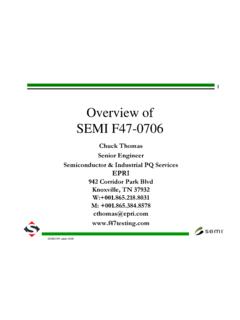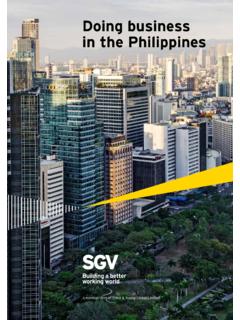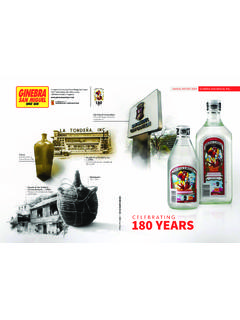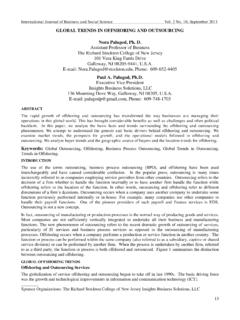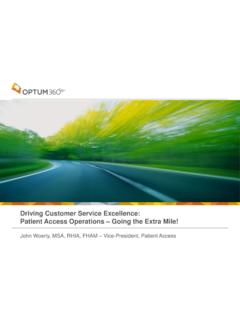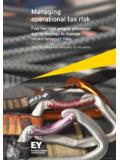Transcription of STEP: E142 Substrate Mapping and Device Traceability ...
1 SEMI 2005 STEP: E142 Substrate Mapping and Device Traceability SEMICON West 2005 San Francisco, California July 12, 2005 SEMI 2005 STEP: E142 Substrate Mapping and Device Traceability Program Outline 1:00 Keynote: Peter Andersen, Intel 1:15 Background and Overview Introduction to the SEMI E142 the Standard Dave Huntley, Kinesys Software (1:15) 1:30 The Industry Need Implementing SEMI E142: A Case Study Steve Chelstrom, Freescale (1:30) The Scope of SEMI E142 Andre van der Geijn, Philips (2:00) EMI E142 Map and Process Examples Dave Huntley, Kinesys Software (2:30) 3:00 Break 3:15 Traceability and Marking Wafer Level Die Marking and SEMI E142 Aidan Cunningham, GSI Lumonics (3:35) Laser Marking and SEMI E142 Josef Pfaffinger, Rofin Sinar Laser (3:55) RFID Marking and E142 Winthrop Baylies, BayTech Group (4:15) 4:35 The Future Factory to Factory Integration with SEMI E142 Dave Huntley, Kinesys Software (4:35) 4:50 Panel Discussion SEMI 2005 Biographies of presenters Winthrop A.
2 Baylies, founder of BayTech Group, is a specialist in international semiconductor, flat panel display, computer disk drive and general gauging technologies. He graduated from Harvard with a BA in Physical Sciences. His career includes over 20 years of management in the Electronics industry. A former chairman of ASTM F1 Committee on Electronics, Win received the ASTM Award of Merit and was elected an Honorary Fellow of the Society. He is a technical architect on the North American FPD Committee, Co-chair of the Traceability Committee, and was instrumental in completing the recently published SEMI Proposed RFID Air Protocol Specification. He has authored numerous technical articles, test methods, international round robin tests and related research reports. Stephen Chelstrom received his BSIE from the University of Arkansas at Fayetteville and has been working in the Semiconductor Industry for 24 years. He has worked for Intel, Sematech, Motorola and currently works for Freescale Semiconductor.
3 Automation and system integration has been his primary focus for the last 15 years and he has been a strong proponent of standards for equipment communication and performance monitoring. He is currently moving Freescale towards elimination of the wafer inking process by providing systems that utilize the latest SEMI standards for inkless wafermaps. Aidan Cunningham is applications and marketing manager for wafer marking systems at GSI Lumonics. He has 16 years' experience in the development and implementation of laser marking systems for silicon wafer and IC package Traceability in the semiconductor industry. Andre van de Geijn has been working in the semiconductor business for 12 years. He started as an IC designer at IBM. Followed by doing project management on complex video processing IC projects. Most recently he has moved into factory automation in the role of IT architect for the Philips Semiconductors back end process. In this role he is responsible for enabling the smooth introduction of new products by applying state of the art IT in the semiconductor back end process.
4 Andre got his Bachelor degree in Electronic Computer Integrated Manufacturing in 1993 at the University of Eindhoven the Netherlands. He got his Master degree in Information Technology in 2003 at the Open University Heerlen the Netherlands. Thesis of this degree was Synergy between central and de-central development of process IT, in a global production network: how the Open Source way of working and technologies can be used in an Inner Source way. Dave Huntley is the founder and president of KINESYS Software since 1992 with responsibility for software architecture, strategic marketing and business development. He has been involved with the development and marketing of the Assembly Line Production Supervisor (ALPS) product line. Dave has been involved with standards development since 1989. He is currently the co-chairman of the Sort Map task force at SEMI responsible for the Substrate Mapping standards (SEMI E142) for final manufacturing. Dave received a first class honours degree in Electrical and Electronic Engineering from Bristol University, UK.
5 SEMI 2005 Biographies of presenters (cont d) Josef Pfaffinger joined Rofin-Sinar Laser in 1984. Prior to taking over the software development group for the semiconductor industry in 1995, he has been involved with project management and software architecture. The years of experience in the field of software engineering focused on design and development of communication processes and application programming interfaces. Since 2002 he is responsible for the Rofin software department. Josef Pfaffinger got a technical degree in electronic engineering in 1984 and a diploma in applied computer science in 1998 from AKAD University/Germany. SEMI 2005 Introduction to the SEMI E142 Standard By: Dave Huntley Kinesys Software Abstract: This presentation will introduce the topics covered by the E142 standard and the requirements that the Sort Map task force strove to meet in its development. The structure of the document suite and its relationship to other standards will be discussed and a few simple examples of its application given.
6 The intention is to provide a background and overview to set the stage for the rest of the program. Contact: Dave Huntley Kinesys Software 6 C Street Petaluma, CA 94952 1 STEP: E142 Substrate Mapping and Device Traceability - Introduction to the E142 Standard - Dave HuntleyIntroduction to the E142 StandardDave HuntleyKINESYS E142 Substrate Mapping and Device Traceability - Introduction to the E142 Standard - Dave HuntleySubstrate Mapping Overview3 STEP: E142 Substrate Mapping and Device Traceability - Introduction to the E142 Standard - Dave HuntleySubstrate Mapping StandardsA1C1B1B2B3B4C2C3C4A1C1B1B2B3B4C 2C3C4A1C1B1B2B3B4C2C3C44 STEP: E142 Substrate Mapping and Device Traceability - Introduction to the E142 Standard - Dave HuntleyXML Schema ( ) Maps Object Model (UML) to an XML Schema5 STEP: E142 Substrate Mapping and Device Traceability - Introduction to the E142 Standard - Dave HuntleySECS II Protocol ( ) Allows equipment to download and upload Substrate (wafer, strip, tray) maps (bin code, transfer, Device id) via a SECS/GEM interface6 STEP: E142 Substrate Mapping and Device Traceability - Introduction to the E142 Standard - Dave HuntleyWeb Services ( ) Allows direct, secure, reliable transfer of Substrate maps7 STEP: E142 Substrate Mapping and Device Traceability - Introduction to the E142 Standard - Dave HuntleySubstrate Types Wafer Types Small die Reticle shot map Multi-project Bumped wafers Strip Types Multi-chip Stacked Tray Types JEDEC Burn-in8 STEP.
7 E142 Substrate Mapping and Device Traceability - Introduction to the E142 Standard - Dave HuntleyParticipants The SEMI E142 Substrate Mapping standard was developed and reviewed by 40 engineers from 13 end user and 8 equipment vendors The Sort Map TF would like to thank in particular the following end users for their participation Freescale Infineon Philips STMicroelectronics TSMC9 STEP: E142 Substrate Mapping and Device Traceability - Introduction to the E142 Standard - Dave HuntleyBalloting Schedule SEMI E142 Substrate Mapping (Approved Oct 2004) SEMI XML Schema for Substrate Mapping (March 2005) SEMI SECS II Protocol for Substrate Mapping (July 2005) SEMI Web Services for Substrate Mapping (October 2005)10 STEP: E142 Substrate Mapping and Device Traceability - Introduction to the E142 Standard - Dave HuntleyFor more information SEMI Information and Control Committee Paul Trio Sort Map TF Meeting Chairman Dave SEMI 2005 Implementing E142: A Case Study By: Steve Chelstrom Freescale Semiconductor Abstract: Freescale will share their experiences with the implementation of the SEMI E142 Substrate Mapping standard and a system overview of their components.
8 The current manufacturing environment that is driving the standard and the benefits will be discussed. A description of the tools that are available to the industry for implementing the E142 standard will be presented. Freescale will discuss further enhancements to the standard to improve the transfer of inkless wafer maps between internal and external manufacturing sites and what probe and test suppliers could provide to further improve their products for IC manufacturing. Contact: Steve Chelstrom CIM Architect Freescale Semiconductor 1 STEP: E142 Substrate Mapping and Device Traceability Implementing E142 A Case Study Steve Chelstrom - FreescaleImplementing E142A Case StudySteve E142 Substrate Mapping and Device Traceability Implementing E142 A Case Study Steve Chelstrom - FreescaleOverview Current manufacturing environment at Freescale Benefits of the E142 standard E142 qualification process with external suppliers Some tools for implementation of the standard What s next with E142 in Freescale?
9 3 STEP: E142 Substrate Mapping and Device Traceability Implementing E142 A Case Study Steve Chelstrom - FreescaleManufacturing Environment Free scale fab/probe sites located in Texas, Arizona, France, Scotland and Japan. FreescaleAssembly sites in Malaysia and China External and joint venture fab/probe sites in France, China and US. External assembly sites in US, Korea, Philippines, Malaysia Expected increase in the number of external probe and assembly sites used for manufacturing4 STEP: E142 Substrate Mapping and Device Traceability Implementing E142 A Case Study Steve Chelstrom - FreescaleProbe to Assembly Flow5 STEP: E142 Substrate Mapping and Device Traceability Implementing E142 A Case Study Steve Chelstrom - FreescaleWhy SEMI E142 & Inkless? BENEFITS SEMI Standard Format: We are unable to support multiple inkless wafer formats with so many internal and external suppliers. Inkless wafers increase yield and decrease scrap Inking for 300 mm is not supported by the industry and very high die count (80k/wafer) wafers are difficult to ink.
10 SEMI E142 supports multiple devices and references on a wafer and provides necessary building blocks for implementing the standard and Mapping wafer maps to your database. SEMI E142 provides a future migration strategy from ftp transfer of wafer maps to using web : E142 Substrate Mapping and Device Traceability Implementing E142 A Case Study Steve Chelstrom - FreescaleExternal Assembly Qualification Process SEMI E142 wafer maps are provided to the assembly site. Initial Qualification: Three 25 wafer lots picked without error Second Product Qualification: One 25 wafer lot picked without error Monitor assembly pick accuracy via random skeleton requests Acceptable criteria: Failure rate of 1 per 1200 : E142 Substrate Mapping and Device Traceability Implementing E142 A Case Study Steve Chelstrom - FreescaleFreescaleE142 Product Startup in Assembly SitePreviously Qualified onSEMI E142 MAPS(1 Lot no errors)Pick 1 WaferVerify SkeletonCorrectiveActionGoodBadPick 3 WaferVerify SkeletonCorrectiveActionGoodBadPick 5 WaferVerify SkeletonCorrectiveActionGoodBadLot 2 Pick 5 WaferVerify SkeletonCorrectiveActionGoodBadLot 1 Pick 5 WaferVerify SkeletonCorrectiveActionGoodBadLot 3 Not Qualified onSEMI E142 MAPS(3 Lots no errors)8 STEP.
